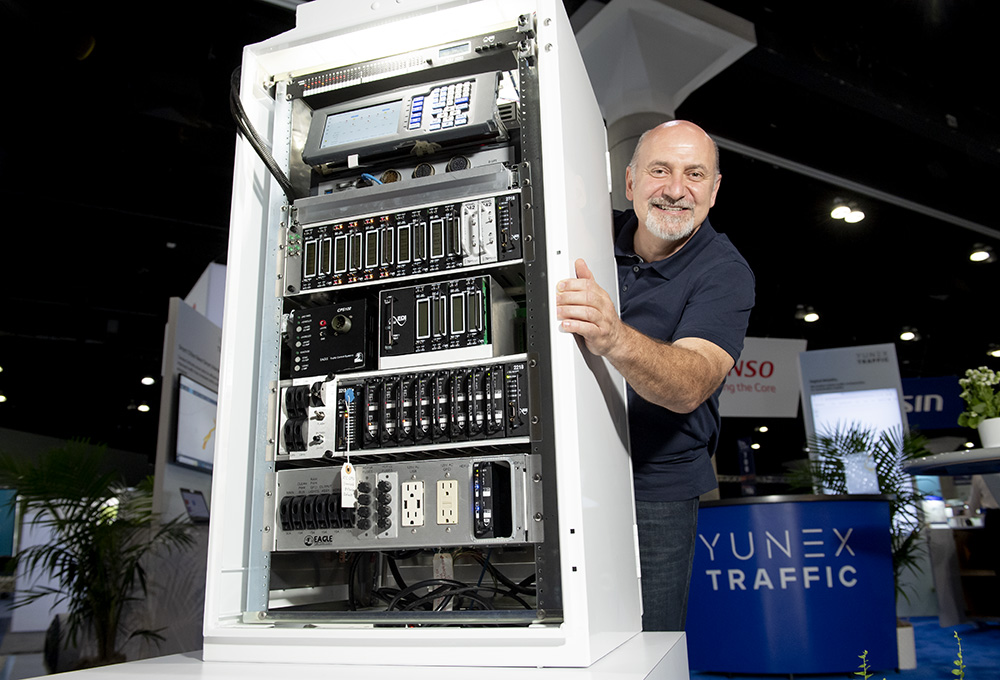
The company is unveiling its new ATC, Blade. This has what Yunex describes as a massive quad-core processor that allows the device to store and analyse large data sets. It also allows for third-party applications to be downloaded on to the controller so it can become an an edge computing device, handling tasks such as traffic detection.
Blade also incorporates features such as a seven-inch touch screen, dual power supplies, WiFi access and customisable analytics for detailed traffic assessment.
Yunex has taken around 18 months to develop Blade, with the first working example having been completed immediately before the show.
The company is also showing for the first time a new suite of solutions for traffic management. The new products – Yutraffic Studio, Sitraffic Co ncert and Sitraffic Symphony – steadily increase the number of features they contain. Studio is the base unit, with Concert and Symphony adding more capabilities.
Studio is described as a Cloud-ready, real-time traffic control and management system that goes beyond basic ATMS functions of changing traffic lights by detecting traffic or changes in environmental conditions.
Concert collects traffic data from multiple sources to create a basis for implementing new strategies. It can handle large quantities of data, including information from third parties and allows the management and control of several traffic zones, including city centres, urban freeways or entire counties.
Symphony focuses on complex urban traffic management and can be customised for multiple operators to ensure real-time congestion and incident response.
Concert is Yunex’s current traffic management system, while Symphony is a next-generation system. Both Symphony and Studio will be available in 2023.
Booth 1003








